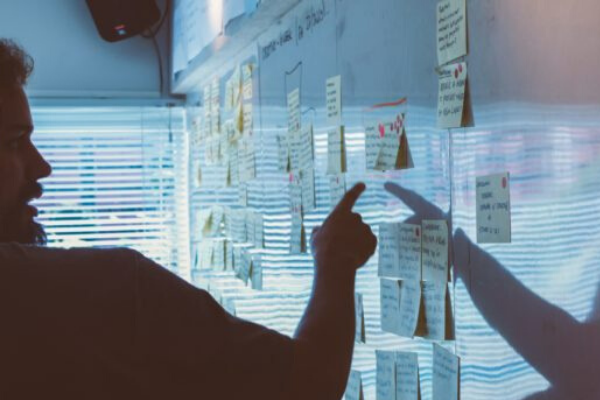Insights
INSIGHTS
All Topics
My Account
Digital strategy vs. digital culture: why charities need to get the balance right
21 Feb 2020by Chloe Green
This month we’re exploring the importance of digital culture, and its relationship with a sound and cogent digital strategy.
No digital strategy has ever worked without first having the fertile ground of a positive organisational culture in place.
You might have heard the famous quote from legendary management consultant Peter Drucker that “culture eats strategy for breakfast.”
Here at Charity Digital, we’re always talking about how important it is for charities to define a strategy for their use of digital technology and data. A sound strategic plan that takes into account digital will help charities inform decision-making, be more efficient, get ahead of opportunities, and manage risk.
So why exactly is Drucker quoted so often in advice articles around digital, seeming to say that strategy should take a back seat?
While a strategy is a plan for how things will be done, an organisation’s culture essentially means the social and psychological environment in which it operates. To understand what he meant, you have to understand the relationship between these two things and how they can support each other in an organisation – or do the opposite. This ethos is particularly important in a charity setting, where so much is driven by people’s values and emotional buy-in.
Here are some steps to building a digital strategy based on culture.
1- Recognise the human factor
Drucker was not saying that strategy is unimportant – rather that no strategy happens in a vacuum without taking into account the people in your charity that have to carry it out day to day, their behaviours and beliefs. This is what makes up an organisation’s culture, and it can make or break any digital strategy.
As emphasised in Digital Strategy on a Plate, you can read all the strategy advice out there, but the best-laid plans of technology adoption will fall flat if they don’t work with your charity’s unique people, their needs, their skills and their attitudes.
We recently spoke with Carolyn Nutkins of Parkinson’s UK who explained how she helped enable 500+ staff to reach outside of their comfort zones and embrace digital transformation.
While the charity is still on its journey, Nutkins has used her background and expertise in HR to create an underlying ’workforce plan’ that almost functions as the engine of the larger digital strategy.
The plan revolves around increasing the skills and confidence of the charity’s people with digital and data, helping them adopt new tools through learning and collaboration, and engaging everyone to help them see the benefits. Without this step, the charity’s successful evolution delivering vital services for people with Parkinson’s would not be possible, Nutkins argues, proving that it’s not all about the technology.
2- Identify what kind of culture your organisation has
Change starts with awareness. This means taking a step back and examining the ways your organisation works currently, and getting a keen eye on the somewhat subtle behaviours of people, both individually and as teams.
It’s important to identify the sort of culture you are working with, to recognise where potential roadblocks or unproductive behaviour patterns might trip you up in your digital journey.
For example, are decisions about digital carried out with users in mind, or do solutions inevitably just get plonked onto people from IT without much two-way communication, or come down to the ’highest-paid person’s opinion’? Are certain teams always experimenting with and pushing everyone to adopt the latest digital toy they found, to the reluctance of other, differently digitally skilled teams with very different needs?
Both of these examples are potential inhibitors to progress, and charities need to be honest and recognise these as issues before they become the reason a strategy falls flat.
There are frameworks to help you recognise where your charity’s culture sits in terms of digital. For example, researchers from the University of Michigan identified four ’archetypes’ that they say organisations fall into. While not all-encompassing, it could help you identify behaviours in your organisation as a whole and the type of approach to take for each.
3- Determine your organisation’s digital skills
As NSPCC’s Clive Gardiner explains in his blog post, the first step to growing a digital culture is to build a foundation of common digital skills. A digital maturity assessment and digital skills audit can help you identify the skills gaps within your teams and where you need to provide more support.
The Digital Maturity Matrix, developed by the NCVO, is a free tool designed to help charities assess their strengths and weaknesses with digital. The questions are designed to assess where you currently stand in your organisation’s use of digital, including how your leadership and skills are supporting digital – all vital components of any digital culture.
It’s also worth making an assessment, not just of people’s digital literacy, but the way that skills are shared within your organisation.
For example, “T-shaped learning” is a concept that Gardiner says can help charities to more equally share the wealth of digital skills and get everyone to be a bit more flexible in their thinking.
Encouraging T-shaped learning within teams means rewarding a culture of curiosity and continual learning where everyone is always improving what they know and learning about lots of little things to supplement their main skills – an approach which is conducive to digital success.
More on this topic
Related Content
Recommended Products
Our Events
Charity Digital Academy
Our courses aim, in just three hours, to enhance soft skills and hard skills, boost your knowledge of finance and artificial intelligence, and supercharge your digital capabilities. Check out some of the incredible options by clicking here.




















